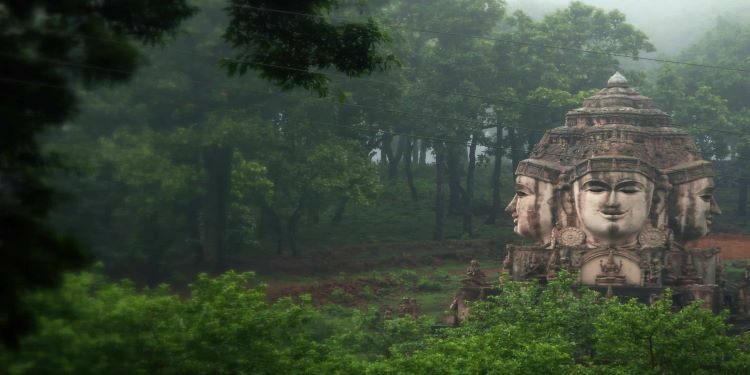Geographical Location
- Amarkantak Plateau, mountain range in Madhya Pradesh state, central India.
- It runs in a north-south direction and forms the eastern base of the triangular Satpura Range.
- The Maikala Range consists of laterite-capped, flat-topped plateaus (pats) with elevations ranging from 2,000 to 3,000 feet (600 to 900 metres). The Satpura-Maikala watershed is the second largest in India.
- The Narmada, Son, Pandu, Kanhar, Rihand, Bijul, Gopad, and Banas rivers run almost parallel from south to north and have carved extensive basins in the relatively soft rock formations of the Maikala Range.
- Vegetation varies from grass and thorny trees to deciduous trees such as teak and sal (Shorea robusta).
Amarkantak Plateau National Park
- The Achanakmar-Amarkantak Biosphere Reserve is a biosphere reserve in India that extends across the states of Madhya Pradesh and Chhattisgarh, covering a total area of 383,551 hectares
Rivers
River Narmada
- The Narmada originates on the western flank of the Amarkantak plateau.It is the largest west flowing river of Peninsular India.
- Flowing in a rift valley between the Satpura in the south and the Vindhya range in the north, it forms a picturesque gorge in marble rocks and Dhuandhar waterfall near Jabalpur.
- Its valley is a depressed block of the Earth’s crust bordered by parallel faults.
- Meets the Arabian sea south of Bharuch, forming a broad 27 km long estuary. Its catchment area is about 98,796 sq. km.
- The Sardar Sarovar Project has been constructed on this river
River Son
- The Son is a large south bank tributary of the Ganga, originating in the Amarkantak plateau.
- After forming a series of waterfalls at the edge of the plateau, it reaches Arrah, west of Patna, to join the Ganga.
Johilla River
- It is a tributary of River Son.
- Its source is near Amarkantak.
Tapi River
- The Tapi is the other important westward flowing river.
- It originates from Multai in the Betul district of Madhya Pradesh.
- Nearly 79 per cent of its basin lies in Maharashtra, 15 per cent in Madhya Pradesh and the remaining 6 per cent in Gujarat.
Source: PIB
















